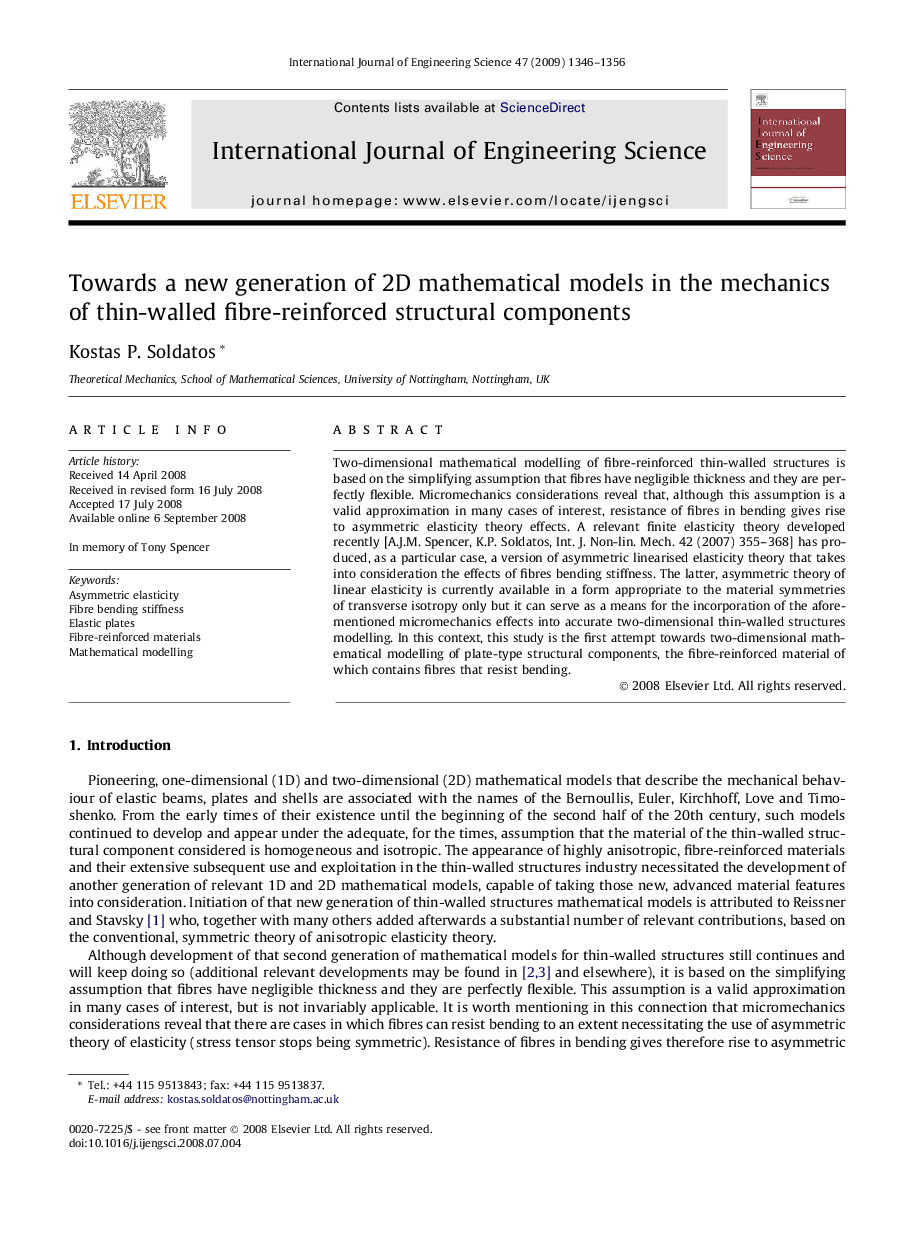| Article ID | Journal | Published Year | Pages | File Type |
|---|---|---|---|---|
| 825524 | International Journal of Engineering Science | 2009 | 11 Pages |
Two-dimensional mathematical modelling of fibre-reinforced thin-walled structures is based on the simplifying assumption that fibres have negligible thickness and they are perfectly flexible. Micromechanics considerations reveal that, although this assumption is a valid approximation in many cases of interest, resistance of fibres in bending gives rise to asymmetric elasticity theory effects. A relevant finite elasticity theory developed recently [A.J.M. Spencer, K.P. Soldatos, Int. J. Non-lin. Mech. 42 (2007) 355–368] has produced, as a particular case, a version of asymmetric linearised elasticity theory that takes into consideration the effects of fibres bending stiffness. The latter, asymmetric theory of linear elasticity is currently available in a form appropriate to the material symmetries of transverse isotropy only but it can serve as a means for the incorporation of the aforementioned micromechanics effects into accurate two-dimensional thin-walled structures modelling. In this context, this study is the first attempt towards two-dimensional mathematical modelling of plate-type structural components, the fibre-reinforced material of which contains fibres that resist bending.
